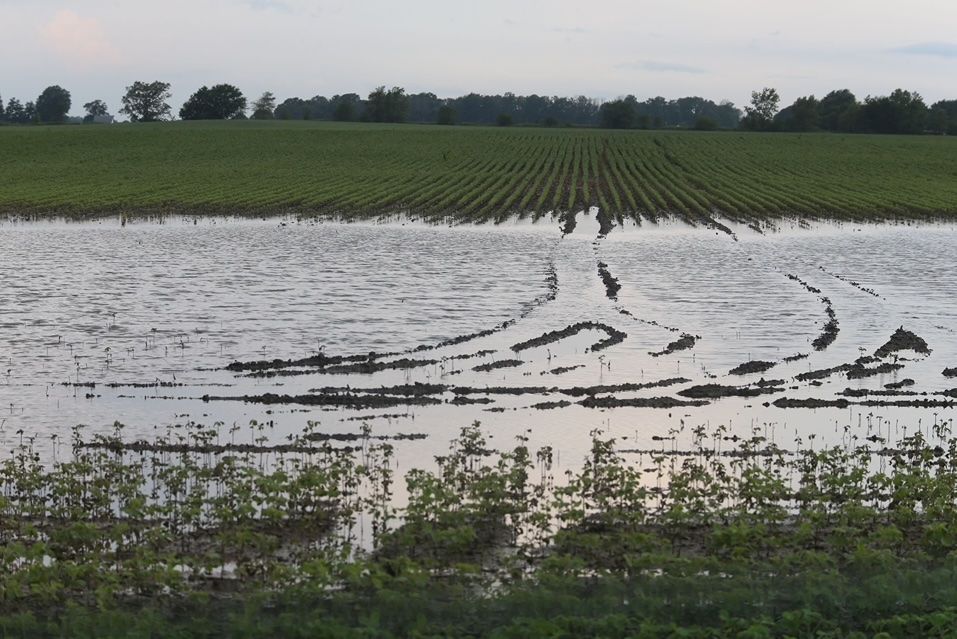Cover Crops: The Hero Your Soybeans Need

Cover crops have become a hot topic in agriculture, especially the row crop world. Farmers use cover crops to prevent soil erosion, replenish nutrients and provide grazing ground in between cash crop seasons, among other purposes. Most farmers can benefit from cover crops, according to Kris Reynolds, Midwest Deputy Director for American Farmland Trust.
Reynolds defines a cover crop as any crop not intended for harvest and used to bridge the gap between cash crop growing seasons. Larry Marek, soybean farmer from Iowa and checkoff farmer-leader, has used cover crops on his farm since 1996, making him a firm believer in the benefits of cover crops. We talked to Reynolds and Marek about their experiences with cover crops and why they encourage other farmers to begin a cover crop practice.
Can cover crops help with erosion?
Cover crops help with erosion in quite a few ways. “Cover crops protect the soil surface and prevent rain from hitting the bare surface of the soil,” says Reynolds. Because the soil is protected by cover crop foliage, raindrop impact is lessened. That means each raindrop has a better chance of soaking into the soil rather than leaving the field through runoff. If enough of the rain washes away, gully erosion can occur.
“Cover crops can especially be helpful whenever there’s a lot of hard rain in a short period of time,” says Reynolds. “Instead of hard rain sealing the surface and causing runoff or evaporation, the cover crops allow the rain to penetrate the soil.”
Overall, cover crops prevent erosion in fields and allow water to penetrate the ground easily.
How can cover crops improve soil health?
One of the many benefits of cover crops is improved soil health. “One thing we may not think of when considering being profitable is the importance of adding diversity to your crop rotation,” says Reynolds. “By adding diversity in your crops, your below-ground diversity increases. Improving below-ground diversity adds more microbial activity to your soil, which helps improve nutrient absorption and aeration of the soil.”
Cover crops also help improve the soil structure, which is an equally important process as microbial activity in improving soil health. Planting cover crops puts roots in the ground throughout the year, not just in the cash crop growing season. Fields will have reduced compaction and better water infiltration with less crusting.
When you improve the structure of the soil, nutrient absorption is also higher. Any time there aren’t roots in the soil, much of the nutrient content in the ground can leech away. “Tests have shown in Iowa that nearly of 70% of nitrates can be captured through the use of cover crop roots. These are nutrients that can be used during the next cash crop,” says Marek.
Reynolds advises his clients, “As your soil health improves, so will your nutrient intake.”
I’m trying to be more sustainable. Are cover crops for me?
“Cover crops can be an option for farmers who want to improve their sustainability practices,” Marek says. “Cover crops can help an operation use less water because of increased soil health and less compacted soil, all while helping farmers meet their nutrient intake goal.”
Both Marek and Reynolds believe sustainability is vital for the benefit of the future of the operation. “What we do now in terms of soil health and erosion will determine the future of farming for generations to come,” says Reynolds. “Cover crops can address many of these problems.”
What are some other uses for cover crops?
“I use cover crops for the benefit of my soil, sure,” says Marek. But he runs one of the many farm operations that does more than just plant row crops; he uses them for multiple purposes.
“After the cash crops are harvested, the cover crops are available for grazing cattle through the late fall, winter and early spring months while still providing cover for the soil and improving the root structure,” he says.
When do I need to plant my cover crops?
“It depends on what crop you’re thinking of planting,” says Reynolds. A good rule of thumb is to plant right after harvest for the majority of cash crops. Reynolds says that in order to get the most value out of a cover crop, it’s good to let them have six to eight weeks of growing time before they’re terminated by cold weather.
Marek likes to apply cereal rye seed into the fields in late August or early September before harvest but as the crop is maturing. This can be done aerially, with specialized application equipment. This allows the cover crop to have nice growth earlier and will provide good ground cover and grazing shortly after harvest.
Cover crops can bring a substantial return to farmers. With a multitude of benefits, uses and crops, it’s no wonder cover crops are a champion in the agricultural world.



